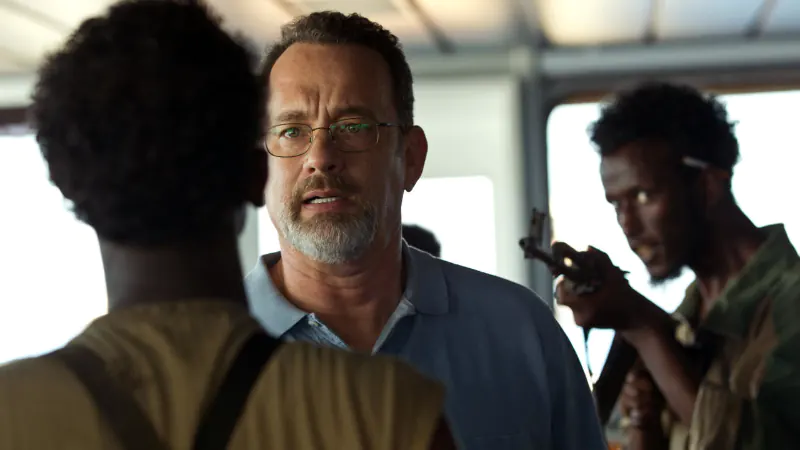Tom Hanks in True Story Cargo Ship Hijack
[Warning: Contains spoiler about the ending]
Captain Phillips tells the true story of the first American cargo ship to be hijacked in two hundred years. It appeared to me as a solid film but not a must-see, until the final scene lifted it to an unexpected high.
How many movies do you know that surprise you with an amazing scene after the climax? I bet you’ll struggle to find a handful. McKee even suggests that such an ‘aftermath’ scene is not essential, and only there to allow the audience to recollect themselves before they appear presentably in broad daylight. Captain Phillips reminds us - as Billy Wilder did with Sunset Boulevard - that McKee can’t be further from the truth. The “Return With The Elixir” or aftermath scene offers tremendous potential for a strong, emotional farewell.
GREENGRASS
When I first saw Paul Greengrass’ Bloody Sunday in 2002, I was blown away with the pic’s direction. Greengrass is one of only a gifted few directors who know how to use the hand-held camera style masterfully. When he adapted the events surrounding the Omagh bombing into the script for the eponymous TV movie, I realised he is also a brilliant screenwriter. He proved this again two years later with United 93, which he directed himself. That film marries a rigid narrative structure with a hyper-realistic cinematic experience.
TOM HANKS
Did you know Ron Howard was to direct Captain Phillips originally? He swapped director’s seats with Paul Greengrass on Rush (2013) and ended up directing Tom Hanks in what I find the actor’s best performance to date. Particularly our movie moment at the end of the film is purebred Oscar material. I was never a big fan of Hanks in his early years - and still can’t watch Forrest Gump - but as he matured, I started appreciating his performances. For me, Spielberg’s The Terminal was a turning point. As his age gives him a natural gravitas, Hanks’ style becomes somewhat more subdued, while still achieving the same dramatic effect. (Ironically, Hanks was snubbed by the Academy while Barkhad Abdi - his character’s antagonist - did receive a nomination for best supporting actor.)

THE SCENE - RETURN WITH THE ELIXIR
In the course of the story, Captain Richard Phillips experiences a terrible ordeal at the helm of the Maersk Alabama cargo ship, ultimately culminating in the death of most of his hostage takers.
Billy Ray’s first draft had a completely uninspiring, cliche Hollywood ending with the family reunion on the Burlington airport tarmac. Because we don’t really know or care about the family, this would never have worked as well as the version we see in the film.
When Captain Phillips is saved and brought on board a navy vessel, he is in shock and goes straight to the medical bay. During the final scene, directed in hyper-realism, we see Phillips undergo medical examination. Nurse Chief O’Brien asks him perfunctory questions such as “Can you talk? Can you tell me what’s going on? Are you okay? You don’t look okay… Are you in any pain right now?” Then, slowly, Phillips comes out of his shock … and the emotions flow. While our hero has always stood strong throughout the movie, finally he shows his humanity and breaks down in tears.
As if the filmmakers wanted to eradicate any doubt: Captain Phillips is not a superhero.
Read the Final Scene of Captain Phillips in the first draft screenplay.
Karel Segers
Karel Segers wrote his first produced screenplay at age 17. Today he is a story analyst, script editor and producer with experience in rights acquisition, script development and production. His
screenwriting classes have trained writers in Australia, Europe, Asia and the Middle East, and his clients include international award-winning filmmakers as well as three Academy Award nominees.
Karel is the founder of
The Story Department and he ranks in the world's Top 10 of most influential people for screenwriting on Twitter.